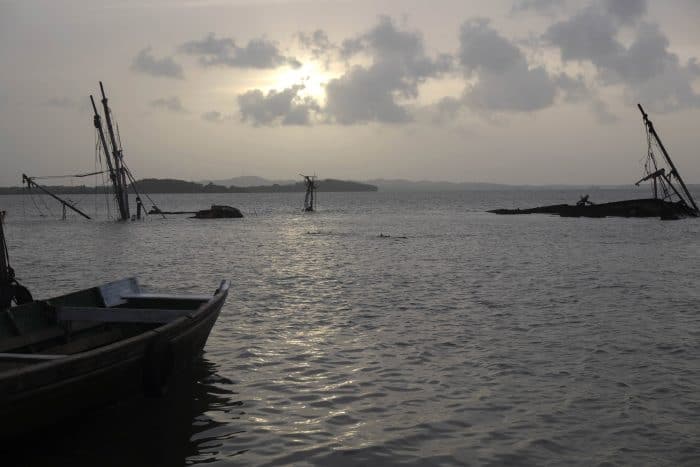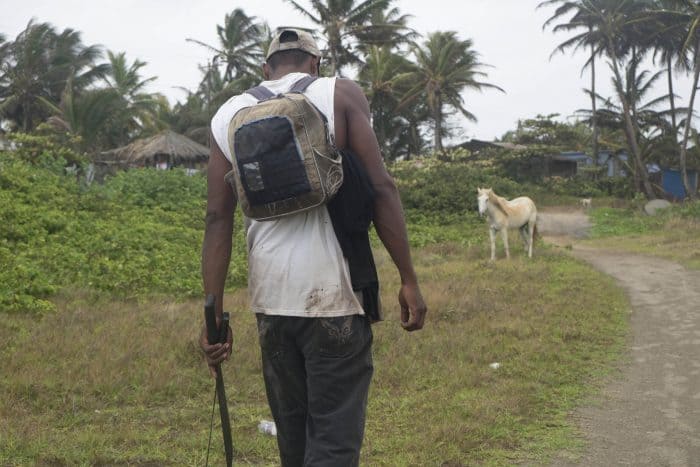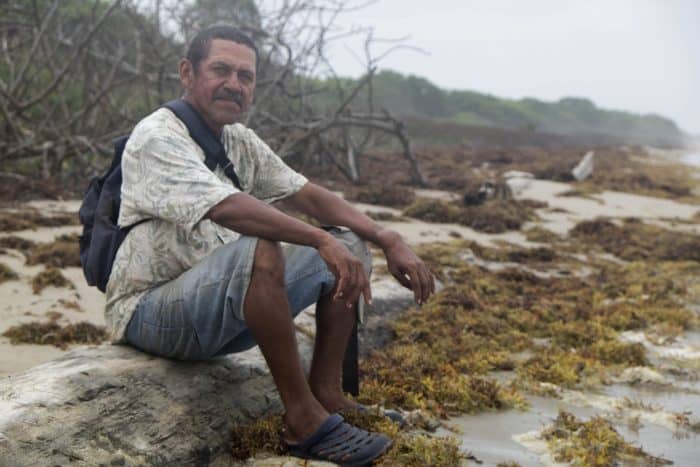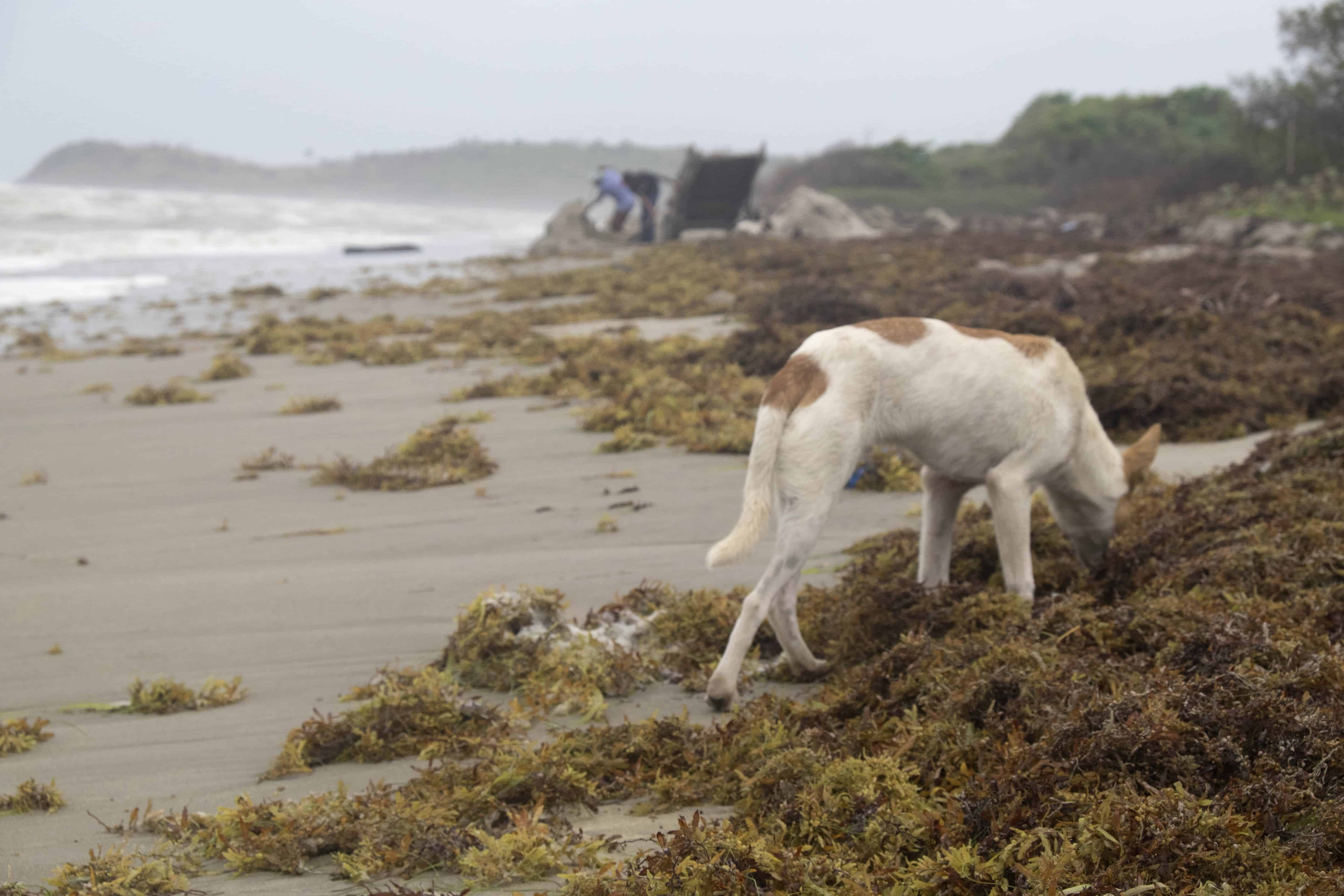EL BLUFF, Nicaragua – It’s Saturday morning, and the beach by this southeast Nicaraguan village is full of seaweed and plastic waste. The waves of the Caribbean Sea are choppy because the rainy season has just begun. Conditions are perfect for a day of beachcombing, says 62-year-old Javier Duncan.
But he’s not talking about normal sea trash – he’s talking about drugs and cash.
“When the coast guard or DEA catches a runner boat, the smugglers throw as much as possible in the sea,” Duncan told The Tico Times. “This can be drugs, but also barrels full of dollars on the way back south. Many people in this village have found things like that.”
Duncan, walking with a machete, a worn backpack and his dog, isn’t the only one out on the beach today. We also meet three young men, who said they left at 4 a.m. to walk to the far end of the beach. They carry worn buoys and ship rope. This stuff they can sell or use, but it’s not the jackpot they had been hoping for.
“When you encounter a full bag – 25 packages each containing a kilo of cocaine – this is worth more than $100,000,” Duncan says. “The problem is getting rid of the drugs. People are out looking for it – the narcos, the navy, other villagers.”

Cocaine is derived from the coca plant, which is mainly grown in the South American countries of Peru, Bolivia and Colombia. In the jungle it is synthesized into cocaine, after which it is transported by boats, trucks and airplanes to consumers in the United States. One of the major routes is north through the Caribbean.
According to InsightCrime, an organization that analyzes organized crime in Latin America, the drug routes have changed in recent years. Direct flights from Colombia to Honduras have been broken up into smaller routes, with airplanes leaving from Venezuela and then loading cargo onto other planes or boats along the coasts of Panama and Nicaragua.
Cocaine trafficking – and the violence associated with it – takes its toll along the way. Although the murder rate along the Atlantic coast of Nicaragua is not as high as in countries such as El Salvador and Honduras, it has reached an average of between 40-44 murders per 100,000 residents in the Southern Atlantic Autonomous Region and the Northern Atlantic Autonomous Region in 2012 – almost three times as high as the rest of the country, according to the U.S. State Department.

Barrels of $20 bills
The first bar one encounters when walking the beach is run by a man who also is named Javier. He stays in the bar day and night, sleeping behind the counter. Sometimes he wakes up when his dogs start to bark, and he hears voices of navy officers patrolling for drugs or money that traffickers toss from their boats. Hours later they return, and when they do, residents in the entire the town set out to comb the beach.
“This is bad money,” Javier, the bartender, says. “I wouldn’t want to touch it. If you don’t get killed, you’ll have difficulty spending it. When you buy yourself a big house or a new car, the police will ask where you got the money. It happened before that people were jailed that way. Most villagers here are unemployed, fishermen, or stone collectors, so big money is always fishy. In the end many people just waste the money away drinking in the bar.”
In the center of Bluefields, an eight-minute taxi boat ride back to the mainland from El Bluff, a money changer explains how he has handled drug dollars: The barrels in which cash is transported always contain $20 bills, but because beachcombers can’t exchange it at the bank without having to explain the source, the money changers offer assistance.
“I’ve had people coming with hundreds of thousands of dollars. They don’t care about the rate; they want to get rid of the money as quickly as possible and have safe Nicaraguan córdobas,” the money changer, who didn’t wish to give his name, told us.

Currency handlers can legally move money to the bank, bit by bit or with the help of other money changers in the family, he said. When there is too much, he or one of his relatives travels to the United States to launder them there. These are dangerous trips, especially if others discover the traveler is strapped with cash.
He tells us of one drug bust he witnessed. He was in a boat in rough seas, when traffickers are harder to spot by law enforcement. He saw the traffickers’ boat, and then the airplane chasing it down. He saw barrels pitched into the water, after which the boat entered a river to hide in the mangroves.
For residents like Javier Duncan, finding that kind of money makes it worth walking down the beach.
“There is just no work here,” he says, waking up to another early morning. “Collecting stones or sand is physical work that pays about $10 a day. I’m too old for that. I don’t know what will happen if I find something – maybe I’ll make the same stupid mistakes as others. But one thing is certain: I could really use the money.”









